
Key Stage Two Beginner students
This stage of the drawing programme takes you through some very important stages in learning to draw. In it, you will learn to develop your understanding of geometry in nature to be able to see and draw 3D shapes. This skill is vital to drawing and relates strongly to the perspective exercises later in the section. I've also included a 3D lettering exercise because again, it teaches you the principles of drawing in perspective. Perspective is a minefield of complexity and difficulty, but to be honest I think it is better to concentrate on getting the basics right before you try to learn the hard stuff. The section also goes through shading of 3D shapes. You'll need to apply the skills you mastered in the Foundation phase of shading flat tones and shading from light to dark because now shading becomes much more complicated. The important thing to learn in this stage is where to put the dark and light shading to make things look solid.
Proficiency: Try to really grasp the exercises fully before you move on. It's important not to rush through the tasks, take time to get them right!
Exercise 1: 3D Shapes
We move from seeing and drawing simple 2D shapes in the world around us to being able to draw 3D shapes and forms. If we can identify and draw 3D shapes accurately then our drawing skills will improve.





Paul's Tip
I hope you remember those basic tips for this exercise! Drawing 3D shapes is difficult but if you sketch them out lightly first you can check to see if they are correct before you move on. If you sketch lightly you can rub them out and correct them if they need to be changed. Press too hard and you'll get annoyed!
Practice drawing 3D shapes in your sketchbook. Draw some small and draw them carefully, then gradually get faster and faster.
Exercise 2: Shading Cubes and Cylinders
This is an important step toward being able to shade objects from observation. Once you can shade these shapes accurately you will be well on your way to shading properly. Just remember to shade neatly to edges and leave no gaps. Blend those tones smoothly!
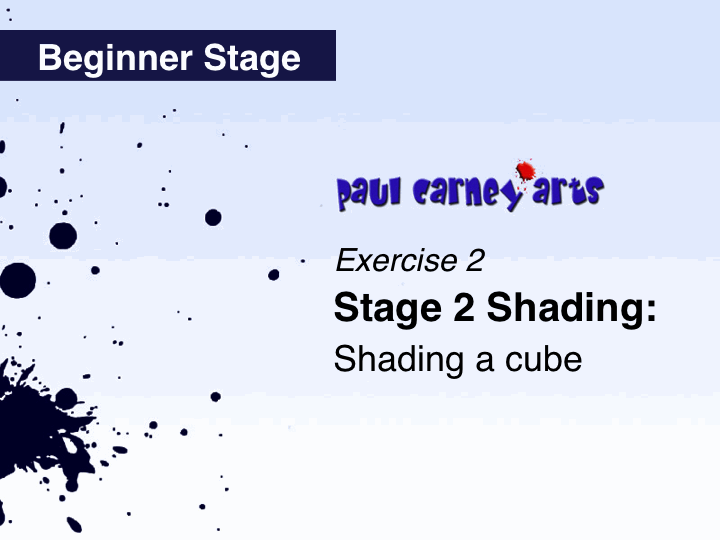
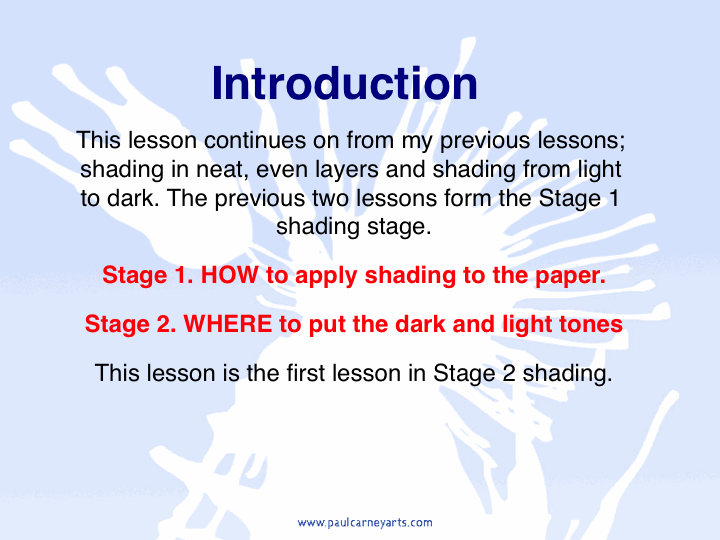
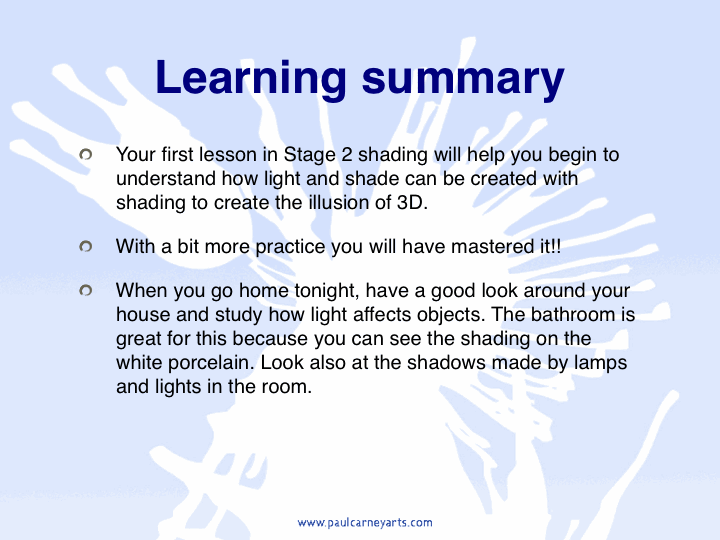

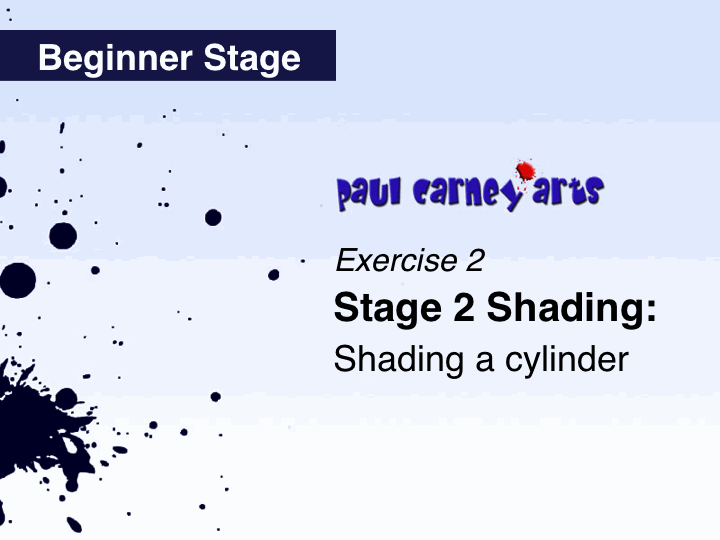



Paul's Tip
The trick to making these shapes look solid and realistic is to get your shading smooth, blended and neatly to the edges and this involves the same skills you learned in the last unit. Keep a sharp pencil and try to use a 2B shading pencil if you can. Tones should blend gradually from light to dark and not be applied in solid bands. Take your time and really grasp it, it might take several attempts to get it right.
When you feel happy with what you've done, it's time to get thinking about how to apply your new skills. What things can you draw that are cube-shaped or cylinder-shaped? Sketch out anything from an x-Box to a skyscraper then try to shade them in the way you've learned.

Exercise 3: Shading Sphere
This exercise is VERY difficult to master because you have to blend your shading smoothly whilst at the same time drawing the curved surface of the ball. If you can do this well you are making great progress, but you might need to repeat it a few times to get it right.
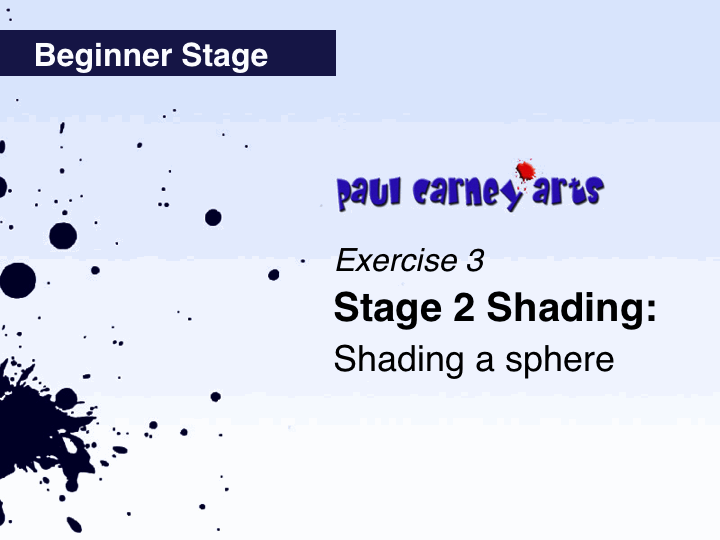

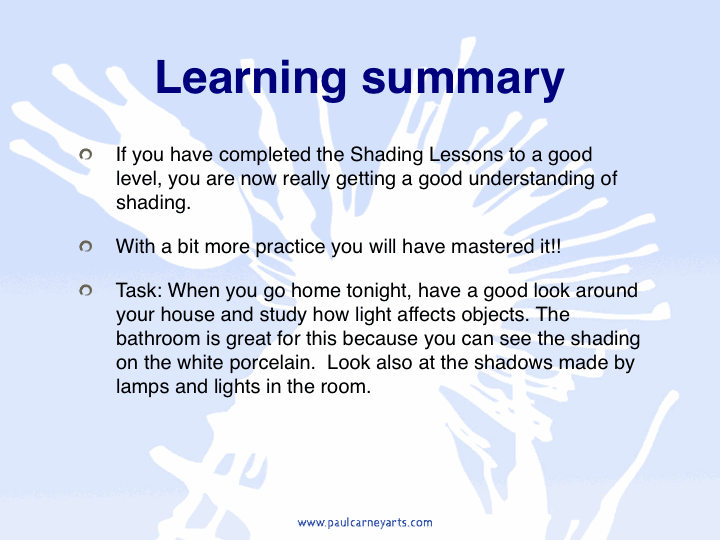

Paul's Tip
The trick to making these shapes look solid and realistic is to get your shading smooth, blended and neatly to the edges and this involves the same skills you learned in the last unit. Keep a sharp pencil and try to use a 2B shading pencil if you can. Take your time and master it, it might take several attempts to get it right.
When you feel happy with what you've done, it's time to get thinking about how to apply your new skills. What things can you draw that are sphere-shaped? Sketch out your spherical object then try to shade it in the way you've learned.

Exercise 4: Still Life Drawing
Now we begin to combine the two previous exercises into one observational drawing, where we draw 3D shapes in front of us and try to shade them.





Paul's Tip
You can practice this exercise easily at home using the food packaging boxes that I have used in the presentation. But you can easily switch the object to be something else that you like better, such as an X-Box console or a jewellery box for example.
Exercise 5: Lettering
I used to love doing this at school and took every opportunity to draw 3D lettering. It's a bit of a puzzle at first, because you have to work out where to put the lines of perspective, but when you 'get' it it's cool.





Paul's Tip
Lot's of people find this lesson really confusing to work out at first. I did too! But when you 'get it' it's really cool to do. Prepare to be frustrated at first until you get the hang of it. If you're still stuck, ask for someone to show you how to do it. Keep trying and don't give up on it!
Exercise 6: Perspective
After our little introduction to perspective we begin to develop our skills and knowledge into drawing things in perspective. There is a lot more to perspective than this, but I firmly believe that once you master this, you will easily pick up the rest as you go.




Paul's Tip
The trick to making these shapes look solid and realistic is to get your shading smooth, blended and neatly to the edges and this involves the same skills you leaned in the last unit. Keep a sharp pencil and try to use a 2B shading pencil if you can. Take your time and master it, it might take several attempts to get it right.

Paul's Tip
There are lots of exercises on perspective on the internet and if you want to you can check them out and learn more about it. In my opinion however, you shouldn't worry too much about it at this stage. The main thing is to know what perspective is and get to grips with the simple aspects of it first. You can see simple perspective everywhere, especially when you look at buildings and roads. Take a look!
Exercise 7: Cartoon Shading
I often get asked for this exercise so I added it as a fun thing you might do. I love cartoon drawing and this is a way of drawing them and shading them also.





Paul's Tip
Nothing illustrates the power of shading better than 3D animation and virtual reality cartoons. They show how shading transforms simple outline drawings into what look like real objects. Try creating your own cartoons then shading them and one day you might be making your own movies like Toy Story. Sweet!
Assessing your work
The following guide should help you to see how to improve your work. When we draw anything there are always things to improve, so don't take it personally. Drawing takes time to improve. Look at the images below for further guidance on assessing your work. Select which code applies to your work then follow the advice given.








